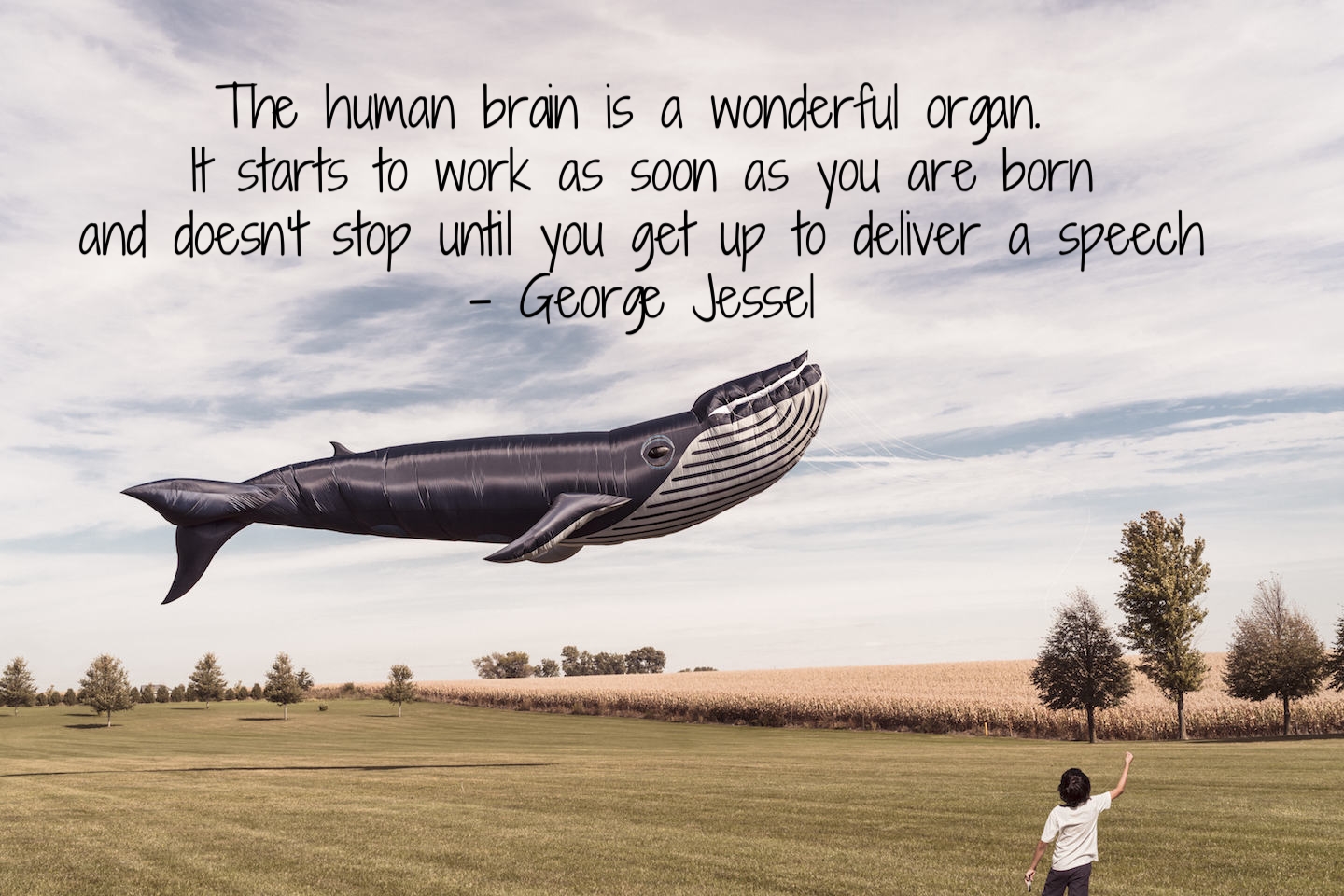Why We Need To Stop Telling Kids To Think Outside The Box
Tripping on 'shrooms in Prague once I stopped by an art gallery window and saw it. It was an orange dog; the tiniest of canines. A stain of fluorescent orange paint in the bottom right corner of a sizable painting of some natural scenery. I remember the grass, the trees, and the people in it but in that moment all I could focus on was the strange orange dog.
I was 23, window shopping, and laughing too hard at a silly little orange dog on an otherwise green painting. Later, I was examining people's faces on the metro ride back to the Airbnb-style room I booked. Being aware I'm influenced I felt I could look into anyone's soul and know who they were. It was like a superpower that allowed me to see them for who they really were; if they were good or bad.
And in case the good people in my school district's HR department are reading this occurred 17 years ago, happened before I became a teacher, and was the last time I used psychedelics. It's just that I still remember that dang dog and wonder if my memory would be so vivid had my consciousness not been altered. For some reason, my mind decided it was significant enough to keep and maybe it uses it somehow to this day without me even realizing.
Using More Of The Brain
Steve Jobs, Richard Feynman, Jimi Hendrix, Jean-Paul Sartre, Bill Gates, John Coltrane, and The Beatles have 2 things in-common; they changed the world by being the GOATs (greatest of all time) of their respective crafts and they operated outside of the realm of conditioned and compliant thinking. Oh, and they all used psychedelics, so that would make it three things I suppose.
Why did they partake and was it responsible for their genius?
Did Steve Jobs get the idea for the iPhone after dropping acid? Did Richard Feynman gain a more intimate understanding of physics which he then used to explain its various phenomena in simple terms after chewing on his peanut butter and 'shrooms sandwich? Did Jimi Hendrix and John Coltrane reinvent their music genres thanks to the psychedelics they enjoyed?
I have no idea, but I don't believe so. My take is... these individuals discovered an entire, often unexplored world of expanded consciousness that exists inside each person's inner mind through their use of psychedelic drugs. In other words: they were given a key to open and access the part of their mind that allows creating work independent of their own ego and the rules and constraints of the world around them.
They did what we call "thinking outside the box." But more accurately, they escaped the box all of us are indoctrinated into. That artificial mind-conjured box that traps those who believe in its existence. That one conditioned response to the given stimulus promoted by school and society. The kind of mindset limited by and to its impoverished set of pre-programmed allowed beliefs.
But How Does Expanded Consciousness Apply To Education?
Sadly, it's the hokey pokey voodoo we fear. We don't teach it. Except that there's hard science behind it.
Typically, we teach subjects in isolation and want things done in a certain acceptable way. Most traditionally-educated students can be likened to androids in need of code upload before they can produce output. We are putting out mostly individuals who wait for someone to tell them what to do.
The creative ones are the weirdos who don't buy into the standardized way of doing everything. They innovate and succeed despite the school system, which undoubtedly gave them some tools. But the tools that really matter; ones that drive success, were procured when these outliers took on passions that had little to do with school. Their consciousness, or ability to look at problems differently and connect seemingly unconnected pieces of brain-stored information expanded.
This is similar to a brain on psychedelics. Scientific studies link psychedelics to increased neuronal activity. Multiple regions of the brain communicate more and more neural linkages form. The individual high on e.g. LSD experiences greater sense of self and the outside world thus understanding how the two worlds are linked more intimately.
So it seems individuals such as Jobs, Feynman, or Hendrix hacked their mind with psychedelics to form connections between neurons that would otherwise not link up. Then, and this is just my conjecture, they were able to tap into the same kind of mental processing when sober.
There Is No Box
I am NOT saying that we need to start giving students 'shrooms, LSD, or mescaline to get them to start thinking outside the box. I'm pretty sure that'd get us all fired.
What I am saying is we need to not just allow but help them discover the consciousness altering path for themselves so they can innovate. Let's help them change how they view reality. Get them to understand that the box didn't exist until we showed it to them, guided them toward it, and insisted they climb in and comply to all the law of men, science, and otherwise. The algorithm needs to be rewritten.
Mainly, let's stop telling kids to think outside the box. There is no box. Let's stop putting them in the box to begin with; limiting them with our beliefs and preconceptions, telling them they need to follow accepted rules without question and despite the fact that some of them are nonsense, and requiring one-size-fits-all products in our classrooms that stifle imagination and murder creativity.
Raise your hand and wait to be called on. Sit down and don't get up. Comply with all the demands of the teacher. Trust the experts. Turn in a 5-page essay, because 3 pages just don't cut it. Your hypothesis must always be in the "if... then..." format or else you'll lose a point. Take trigonometry because it's required. Take that hat off because that's just not acceptable.
Why?!?! Why do we do that?
We want our students to become leaders but we force compliance. We want them to be creative but we use one-size-fits-all approaches. We want them to think critically but we teach them to think exactly the same way we do and want it done. We want them to be passionate about learning but extort them to take subjects they don't like and cram in content they'll never use.
Look... some of these things might take a long time to change because they are outside of the teachers' control. But, you can change how things are done in your classroom.
You can decide and teach your students to question norms, beliefs, rules, and preconceptions. You can foster creative flexibility, because the book report does not always have to be an essay. It could be a website or a blog or a podcast. You can stimulate sharing of information between multiple brain regions by asking students to explain how Hamlet is similar to Tesla Model S because they're into cars or Call of Duty because kill ratio is where it's at.
But whatever you do stop telling your students to think outside the box. Tell them there is no box. Explain that the world outside and inside their inner mind is their playground. Allow yourself to play. Then show them how to play.
You have the power to change lives. Use it often.
Thanks for reading! I hope you found my article useful. If you did consider signing up for my newsletter below. I send it out on Wednesday and Sunday mornings. If you are looking for a new book that can help you add to your teaching arsenal and help teens learn check out my books on Amazon. Every paperback is $11.97 or below and every Kindle $2.99 until Sunday 12/3. You can take a look here.
Hi! I'm Oskar.
I teach, write, speak, rant to make the world better.
BOOKS & TOOLS
CONTACT ME
BLOG ARCHIVE:
- August 2024 2
- July 2024 2
- June 2024 1
- October 2023 1
- September 2023 3
- August 2023 6
- July 2023 6
- July 2022 2
- June 2022 1
- November 2020 3
- October 2020 3
- April 2020 1
- March 2020 5
- July 2019 1
- June 2019 1
- April 2019 1
- January 2019 1
- November 2018 3
- October 2018 2
- September 2018 1
- August 2018 8
- July 2018 11
- June 2018 4
- May 2018 5
- April 2018 2
- March 2018 4
- February 2018 5
- January 2018 3
- December 2017 1
- November 2017 5
- October 2017 7
- September 2017 6
- August 2017 5
- July 2017 3
- June 2017 10
- May 2017 7
- April 2017 7
- March 2017 15
- February 2017 12
- January 2017 13
- December 2016 15
- November 2016 8
- October 2016 7
- September 2016 12
- August 2016 14
- July 2016 10
- June 2016 13
- May 2016 10
- April 2016 8
- March 2016 5
- February 2016 7
- January 2016 6
- December 2015 5
- November 2015 8
- October 2015 2








